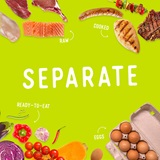Cook
Nuke it don’t puke it
The majority of food poisoning happens at home.
Cook meat, chicken, eggs and seafood thoroughly to kill bacteria that can make you sick. When cooking chicken or minced meat, ensure juices run clear and there’s no pink inside. Egg whites and yolks should be firm, not runny. Only reheat food once, and until it’s steaming hot.
Play it Food Safe to prevent food poisoning.
Food safety tips
Bacteria that cause food poisoning can grow easily on high-risk foods such as:
- dairy products
- meat (including poultry) fish and seafood.
Given time and the right temperature conditions, bacteria can multiply quickly to dangerous levels.
Bacteria grow best at temperatures between 5 °C and 60 °C. This temperature range is known as the ‘temperature danger zone’. To keep high-risk foods out of the temperature danger zone:
- Always keep high risk foods at the following temperatures:
- above 60 °C for foods such as roasts, stews, casseroles, soups and curries
- below 5 °C for foods including sliced meats, desserts, dairy products, sandwiches and salads.
- Always defrost frozen food in the fridge or in a microwave oven set on ‘defrost’. Defrosting food on the bench top can be unsafe, and increases bacteria growth in foods as they defrost.
- Make sure food is cooked thoroughly. Joints of meat and poultry should reach at least 75 °C in their centre – this will kill most harmful bacteria.
- Cook mince all the way through.
- Make sure meat and poultry juices are clear, not pink.
- Cook and serve food immediately – never leave high-risk food out at room temperature. Any food left out for more than four hours should be thrown away.
- If reheating food make sure it is reheated until steaming hot.
For more food safety tips, watch:




Last reviewed: 01-09-2020